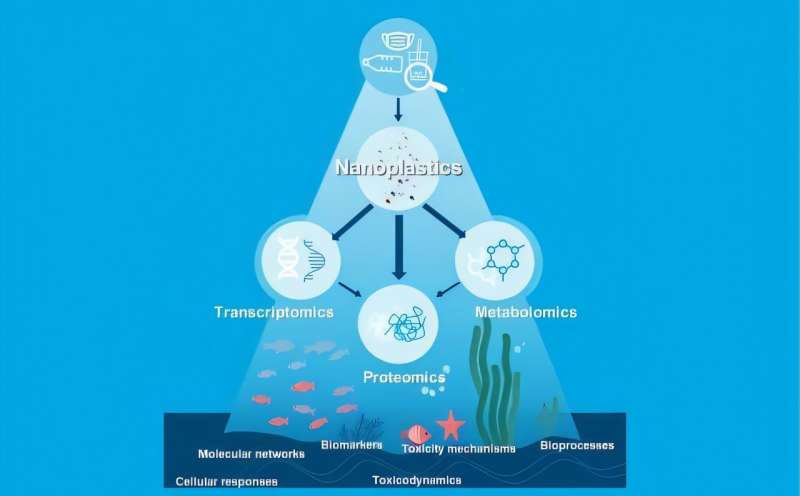

Plastic pollution has become a growing crisis for aquatic environments, with nanoplastics emerging as particularly hazardous due to their minuscule size and broad dispersal. Unlike larger plastic fragments, nanoplastics infiltrate cellular systems and affect organisms in intricate ways.
Given these risks, an in-depth understanding of nanoplastic toxicity is essential to formulating strategies for reducing their impact on marine and freshwater life. Addressing these challenges requires comprehensive research into the molecular effects of nanoplastics on aquatic species.
Published in Frontiers of Environmental Science & Engineering, a review conducted by a research team from the University of Southern Denmark and Nanyang Technological University utilized transcriptomics, proteomics, and metabolomics to probe the molecular effects of nanoplastics on aquatic organisms.
Researchers assessed molecular responses across species, revealing significant cellular disruptions and underscoring the vital role of multi-omics techniques in advancing our understanding of aquatic ecotoxicology.
Through a multi-omics approach, the study revealed that nanoplastics provoke various toxic responses in aquatic organisms, notably through oxidative stress, metabolic disturbances, and photosynthesis inhibition.
By integrating data from transcriptomics, proteomics, and metabolomics, researchers mapped these impacts across biological layers, from impaired protein synthesis and cellular energy pathways to stress-related gene expressions. Importantly, the study found both common toxicity responses across species and distinct molecular reactions among fish, algae, and invertebrates.
These findings underscore the value of multi-omics in detailing the complex ways nanoplastics impact aquatic ecosystems, highlighting the need for precise interventions to address this pervasive threat.
Lead author Dr. Mohamed Helal commented, “Our research sheds light on the complex molecular interactions of nanoplastics within various aquatic species. By integrating multi-omics data, we gain a more detailed view of the toxicity mechanisms, which is critical for evaluating the ecological risks posed by nanoplastic pollution.”
The study’s findings on nanoplastic toxicity carry crucial implications for environmental policy and pollution control. By clarifying nanoplastics’ molecular impacts, regulators can create targeted strategies to monitor and mitigate plastic contamination in aquatic ecosystems.
Furthermore, this research emphasizes the ongoing need for advancements in omics technology to support more effective conservation measures.
More information:
Mohamed Helal et al, Multi-omics in nanoplastic research: a spotlight on aquatic life, Frontiers of Environmental Science & Engineering (2024). DOI: 10.1007/s11783-024-1893-3
Citation:
Multi-omics approach reveals nanoplastic toxicity in aquatic life (2024, November 4)
retrieved 4 November 2024
from https://phys.org/news/2024-11-multi-omics-approach-reveals-nanoplastic.html
This document is subject to copyright. Apart from any fair dealing for the purpose of private study or research, no
part may be reproduced without the written permission. The content is provided for information purposes only.